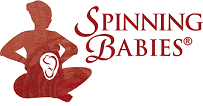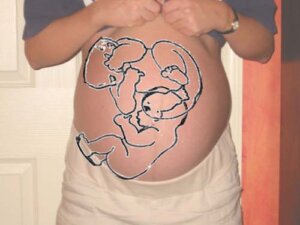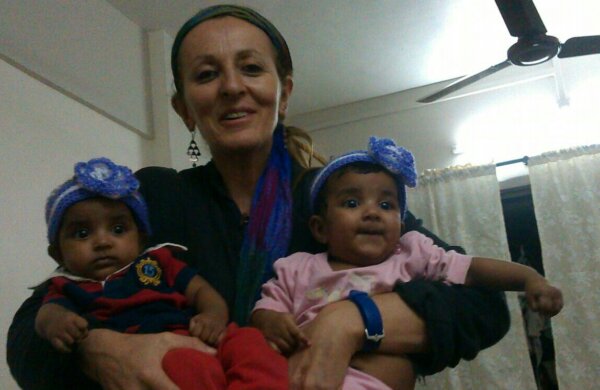What is specific to twins in fetal positioning?
Whatever a healthy woman carrying a single baby can do, a healthy woman carrying twins can do.
All the techniques we recommend use the body’s own weight or position to work, and none of them are forceful as long as your helper isn’t forceful. We don’t manipulate baby’s position here.
A doctor or midwife might be trained to try to manually turn Twin A (in a special type of ECV) called a Charitê External Cephalic Version whereas, if there is only one baby in the uterus, several doctors or even a midwife may attempt to manually turn the breech baby to a head down position. (See our ebook or Nicole Morales and Jamie Mossay’s The Breech Release book.) This technique is not without risk and not widely successful, but can be tried. We suggest doing the balancing activities for a week or at least every day before the procedure and especially within the hour before the doctors give this a try. We believe there will be more ease and less force. Maybe even more success/
Will techniques the parent do at home be enough to help both babies head down?
Sometimes.
Sometimes our program of Daily Activities (Daily Essentials is a how-to video) and Three BalancesSM with more balances listed under our Techniques section work. Our ebook gives a 6-day program that you can also do with twins if the first or both is breech. Will it turn the head down baby breech? Not likely! Body balance means babies find space to both be head down. – As long as there is nothing blocking their turn in a balanced womb.
We don’t know how the twins are going to affect each other’s positions. Adding a very rhythmical and gentle movement may allow them to move head down. Think of multiple sized marbles filling a jar. You want to get one more in, so you jiggle the jar a little bit. The marbles shift some. You add water and jiggle, now the marbles accommodate each other more easily. Let’s think now about multiple babies in the womb.
Two babies may be lined up like two little compact ovals next to one another or they may be curled facing each other, a bit like a puzzle. More amniotic fluid (normal, or up to a high normal amount) gives more room for a big position change.
Drinking 3 quarts or liters a day is about right. Add more if you are doing athletics (please consider gentle stretches in pregnancy) or live in a hot, dry climate. Eat salt-to-taste, meaning if you crave salt have a little, and if you “never” eat salt, I would venture to say, have a little iodized salt daily. If you eat restaurant food, you’ll get salt unless it’s a very unusual restaurant.
There are doctors who support vaginal birth of twins, even with Twin B is breech. It’s important to seek and compare.






